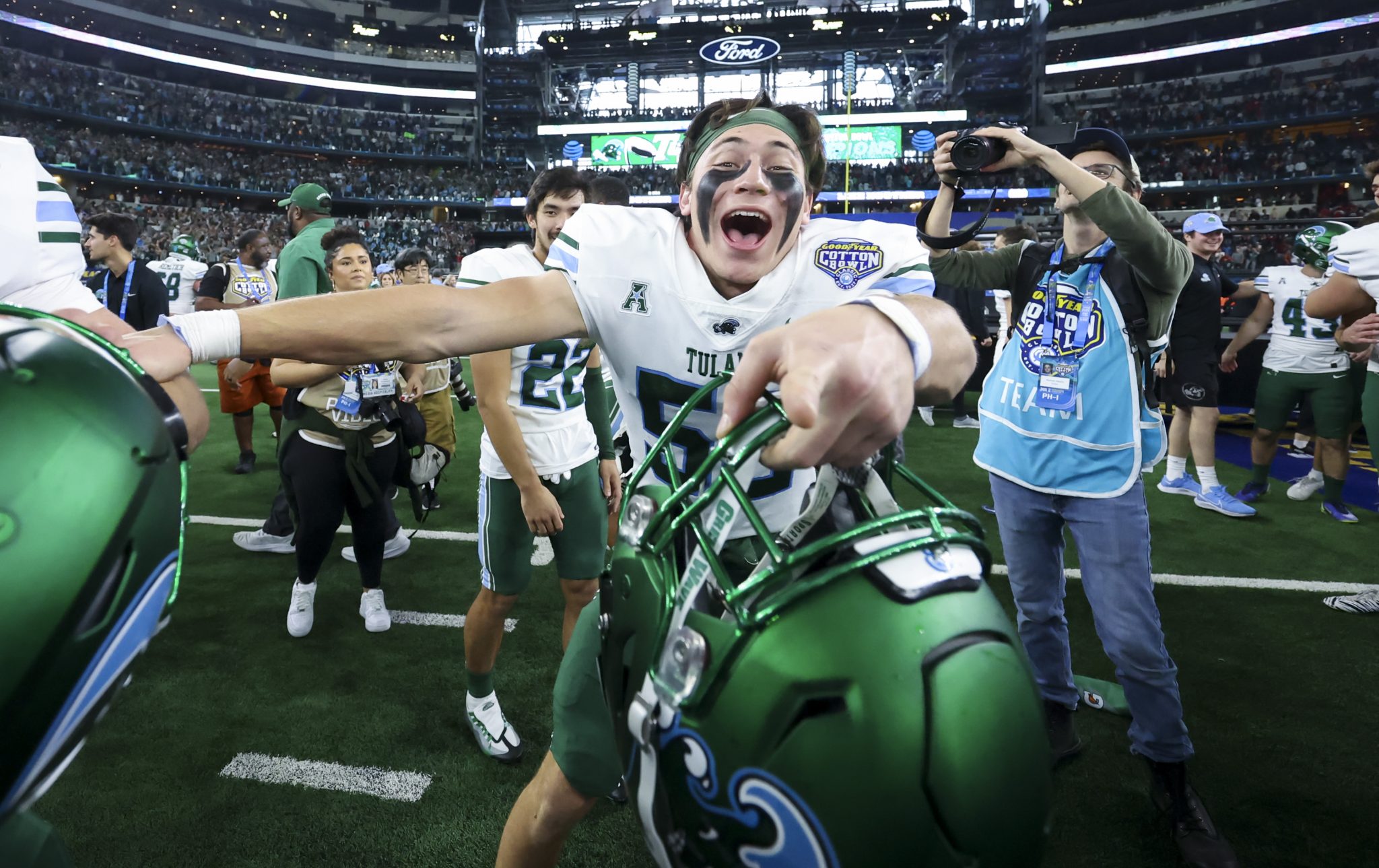
A Group of 5 tournament? Revisiting New Year’s 6 results to determine the potential
By Paul Harvey
Published:
The future of the postseason in college football remains a topic of discussion, even as the country braces for the first edition of the 12-team College Football Playoff. The teams within the Group of 5 are particularly being discussed with ideas of a potential move to separate the teams into their own tournament.
In a report from the end of April, ESPN’s Heather Dinich reported there was “buzz” around the idea of a G5 tournament. The idea is not an entirely new one but has not gained traction in the past.
When that report surfaced, the college football world appeared split into 2 camps. Some fans felt it was unwise to relegate G5 programs into a postseason experience similar to the NIT while others viewed it as the right move with most G5 teams unlikely to seriously challenged the power programs on a regular basis.
That discussion is fun, but what do the numbers say? First, let’s take a dive into the individual results of G5 teams participating in New Year’s Six Bowls followed by the necessary context to consider.

NORTH CAROLINA Must be 21+. Gambling problem? Call 1-800-GAMBLER.
New Year’s Six results
- 2014 season: Fiesta Bowl — No. 21 Boise State 38 vs. No. 12 Arizona 30
- 2015 season: Peach Bowl — No. 14 Houston 38 vs. No. 9 Florida State 24
- 2016 season: Cotton Bowl — No. 8 Wisconsin 24 vs. No. 12 Western Michigan 16
- 2017 season: Peach Bowl — No. 10 UCF 34 vs. No. 7 Auburn 27
- 2018 season: Fiesta Bowl — No. 11 LSU 40 vs. No. 7 UCF 32
- 2019 season: Cotton Bowl — No. 13 Penn State 53 vs. No. 15 Memphis 39
- 2020 season: Peach Bowl — No. 11 Georgia 24 vs. No. 6 Cincinnati 21
- 2021 season: Cotton Bowl (CFP Semifinal) — No. 1 Alabama 27 vs. No. 4 Cincinnati 6
- 2022 season: Cotton Bowl — No. 14 Tulane 46 vs. No. 8 USC 45
- 2023 season: Fiesta Bowl — No. 8 Oregon 45 vs. No. 18 Liberty 6
For this discussion, we’ve limited the range of games to the New Year’s Six era that began with the formation of the CFP for the 2014 season. BCS games, though notable, were not included.
Just on the surface, in the 10 years of the New Year’s Six, G5 teams went 4-6 overall with 1 appearance in the Playoff semifinals. That CFP appearance belongs to Cincinnati, but the Bearcats were largely dominated by Alabama.
In a conference breakdown, the AAC was responsible for 7 of the total G5 appearances in that time frame with a 3-4 overall record. C-USA, MAC and MWC each produced 1 appearance, and Boise State’s appearance (for the MWC) was the only victory from that group.
From power conferences, the SEC went 3-1 against the G5 while the Big Ten went 2-0. The Pac-12 went 1-2 with the ACC losing its only game from the list with FSU’s loss to Houston.
Additional context
Those are the simple results. Now, for the context needed. For some of these games, the topic of opt-outs must be included. Yet, for all the impact those opt-outs could have had, it led to a combined 1-5 record for G5 teams against the mighty SEC and Big Ten.
Beyond the opt-outs, the shifting landscape of the sport must be considered. Revisit the list of games, and what stands out?
Largely that the key teams to become victorious from the G5 are, in fact, no longer G5 programs.
UCF, the G5 darling who went undefeated in 2017 and proclaimed the Knights the national champions after a Peach Bowl win, is now in the Big 12. That fact does not invalidate a win over Auburn, but UCF elevated itself out of the G5.
A similar case involves Cincinnati. Luke Fickell (now at Wisconsin) elevated the Bearcats during his tenure into a program that went toe-to-toe with Georgia in one postseason before falling to Alabama in a CFP semifinal.
Those Cincinnati teams were also a bit unique. They included NFL-caliber talent that is not commonplace among G5 teams, including NFL draft picks Desmond Ridder and star defensive back Sauce Gardner.
If you adjust the list of G5 victories to account for programs now in the Big 12 (that group consists of UCF, Cincinnati and Houston), the G5 is left with just 5 total games from that list. And a 2-3 record, but none of those wins came against the SEC. Tulane’s win against USC would be the only one to come against a team that will be in the Big Ten or SEC when the 2024 season starts.
What does that mean? Well, like most things in college football, fans can derive their own meaning from the numbers and the context.
However, the idea of the G5 — the G5 as currently constructed — competing in the new Playoff is unlikely.
Fans needs to remember that it is not just the power conferences that look different with the death of the Pac-12. The G5 also look substantial different from the momentary flashes experienced during the New Year’s Six era.
It’s also true football is not likely to produce the kind of similar Cinderella stories as the NCAA Tournament in basketball. With teams needing to play up to 16-17 games to win a title, depth will be a key factor for teams at a level previously unheard of.
That kind of elite depth does not exist at the average G5 program, even for one playing at the upper end of the spectrum. So then, it ultimately boils down to whether or not G5 teams want to play for the shot at 1 game in the spotlight or seriously play for a tournament title at their own level.
In the end, all this discussion will ultimately boil down to is money. That is the driving force in the latest rounds of realignment and the decision to expand the Playoff.
If the leaders of college football want to separate the G5 teams into a separate tournament, all it will take is a broadcast deal and enough financial backing to entice the teams to participate.
But, without a significant monetary reward, programs from the G5 are unlikely to relinquish the chance to get at least 1 team into the field of 12 for the Playoff.
Bet $10, Get $150 States: AZ, CO, DC, MA, MD, MI, NC, NJ, PA, VA, WV /// First Bet Bonus Up to $1500: IL, IN, IA, KS, KY, LA, NV, NY, OH, TN, WY
Paul Harvey lives in Atlanta and covers SEC football.






